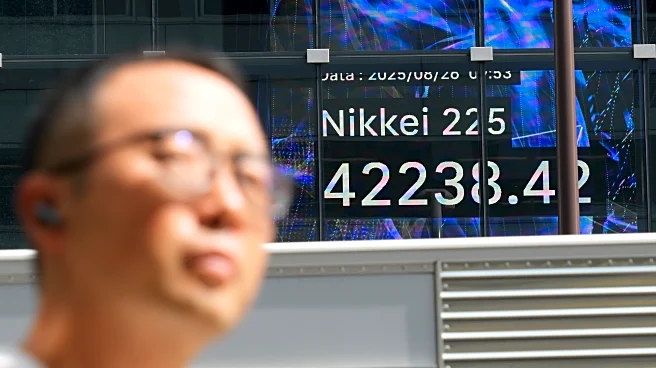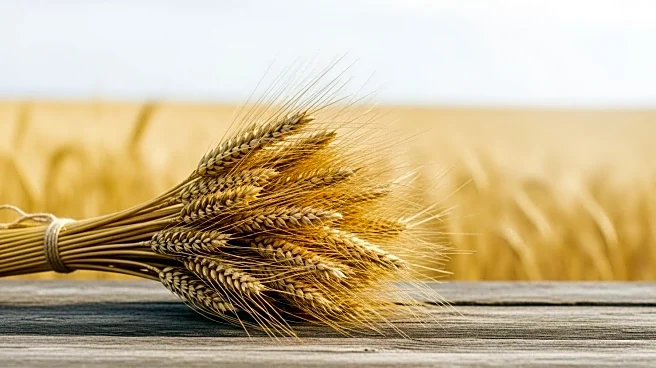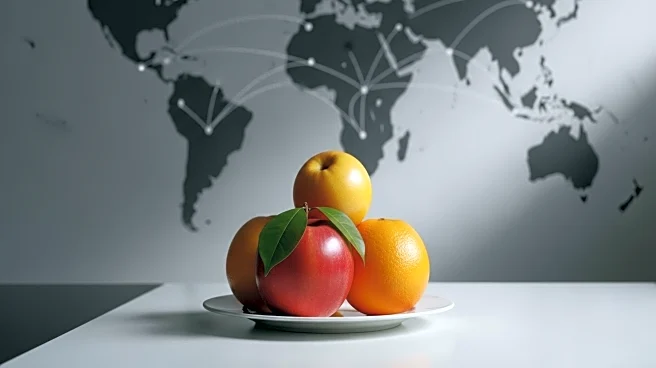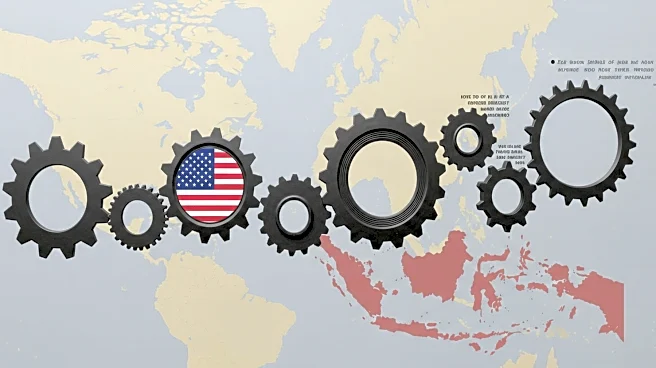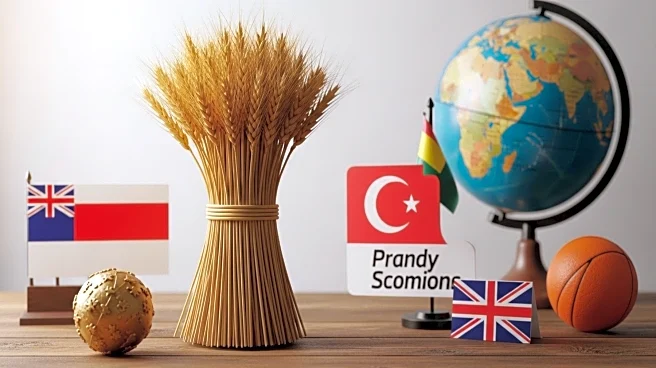Rapid Read • 8 min read
The grain market is experiencing downward pressure due to several factors, including a likely record-large U.S. corn crop and uncertainty over Chinese demand for soybeans. Corn futures have drifted lower as the anticipated large crop continues to weigh on prices. Soybean futures initially found support from hopes of progress in the U.S.-China trade war but later faced pressure from favorable crop weather. Wheat futures also declined due to ample global supplies and rising production estimates. Livestock markets, however, showed gains, with live cattle, feeder cattle, and lean hogs all ending the day higher. Crude oil prices saw a slight increase, while the S&P 500 Index and the Dow Jones Industrial Average both posted gains.
AD
The current trends in the grain market have significant implications for U.S. agriculture and trade. The pressure on corn and soybean prices could impact farmers' profitability, especially if export prospects remain uncertain due to trade tensions with China. The ample global wheat supply further complicates the situation, potentially affecting U.S. wheat exports. Livestock market gains may provide some relief to farmers, but the overall economic impact of fluctuating grain prices could influence broader agricultural policy and trade negotiations. The slight increase in crude oil prices and stock market gains suggest mixed signals in the broader economic landscape.
The grain market will continue to monitor developments in the U.S.-China trade negotiations, as any progress could influence soybean demand and export prospects. Additionally, the upcoming harvest season will be crucial in determining the actual size of the U.S. corn crop and its impact on prices. Stakeholders, including farmers and agricultural businesses, will need to adapt to these market conditions and potentially advocate for supportive policies. The livestock market may continue to provide some stability, but broader economic factors, including crude oil prices and stock market performance, will also play a role in shaping future trends.
The ongoing trade tensions with China highlight the vulnerability of U.S. agriculture to international relations and policy decisions. The reliance on export markets underscores the need for diversified trade strategies and potential shifts in domestic agricultural policy. Additionally, the environmental impact of large-scale crop production and its sustainability may become more prominent in discussions about the future of U.S. agriculture.
AD
More Stories You Might Enjoy
